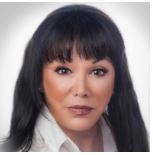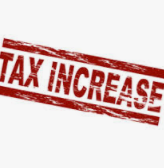
The Tax Cut and Jobs Act created the federal Qualified Opportunity Zone (QOZ) program that became effective in 2018 and will be operative for up to the next three decades. Effective January 1, 2018, through December 31, 2026, individuals, C and S Corporations, REIT’s, partnerships and other pass-through entities can sell their appreciated capital assets and elect to reinvest the resulting capital gain income into a Qualified Opportunity Funds (QOF), in order to defer the tax on those gains for up to eight years and permanently exempt up to 15% of the original federal gain and 100% of the post-reinvestment gain. California has indicated they will not be conforming to the federal rules, while Utah likely will, and investors must carefully evaluate the state impact of any reinvestment.
The QOZ program offers flexible tax savings and diversification tool for taxpayers generating larger gains. To participate in the QOZ program, the taxpayer must roll all or a portion of their short-term or long-term capital gain into a QOF within 180 days of the recognition date of the gain. The QOF must then timely invest the deferred gains into undeveloped or developed real estate, a new or existing QOZ-based business, or other qualified QOZ property.
Each state governor was empowered to designate specific economically challenged census tracts that met statutory guidelines. Currently, there are over 8,700 census tracts (approximately 10% are in CA) throughout the U.S., plus all Territories of the U.S., which qualify for QOZ investment. For a more detailed overview, please see our Tax Alert released August 1st. (Click here)
The Bottom Line – The QOZ Program Increases the Investor’s Bottom Line
An eligible taxpayer who invests their capital gains into a QOF can defer reporting the initial gain for up to eight years. In addition to the deferral, there are also partial permanent tax savings (10% and 15% gain exemption) for holding the QOF investments for five or seven years, respectively. Gains accruing after the investment into the QOF will be completely tax-free upon sale if the investment is held for at least ten years. This full gain exclusion remains effective on QOF holding periods through December 31, 2047, giving investors up to 29 years to accrue (federal) tax-free gains.
How It Works
Capital gains resulting from an equity interest in real estate, tangible or intangible property, stock and some straddle transactions can be re-invested, within 180 days, into one or more QOFs. The taxpayer can invest funds from sources other than qualified gains into a QOF. However, the IRS will require the fund to be bifurcated to track the qualified and non-qualified funding since the non-qualified funds will not be eligible for asset step-up in years five, seven and ten.
A QOF is a separate legal entity (C Corp, S Corp, or partnership) that is made up of at least 90% QOZ assets (equity in a corporation, partnership or QOZ tangible assets). Some flexibility is offered to the QOF’s for the timing of these 90% testing periods by allowing them to determine the tax year and first month of QOF eligibility. Periodic asset valuations will be based on audited financial statements or cost basis if the entity is not audited. Seventy percent or more of the tangible property owned/leased by a trade or business must be QOZ business property.
The QOZ investor starts with a tax basis of zero in the QOF to the extent they invest qualified gains. An automatic 10% and 5% step up in basis, based on the amount of the originally deferred gain, is triggered after five and seven years respectively. This means that 10% (if held for five years) or 15% (for seven years) of the deferred gain will be excluded from the gain recognized at December 31, 2026, or earlier if the QOF is disposed of before then.
As an example, if a taxpayer invests $1,000,000 of qualified gain into a QOF on September 30, 2018, the taxpayer’s federal tax basis in the QOF starts at $0.00. After five years, (September 30, 2023) the tax basis increases by 10% of the deferred gain or $100,000. At seven years, (September 30, 2025) the tax basis will increase by another 5% for a cumulative basis of $150,000. On December 31, 2026, the $1,000,000 deferred gain is reportable but is offset by the $150,000 basis step-up, for a net reportable gain of $850,000. The basis step-up translates into a minimum federal savings of $35,700, assuming a long-term capital gain rate of 20% and a 3.8% Net Investment Income Tax rate. If the gain was short-term, the permanent tax savings would increase to $61,200 [(37% +3.8%) x $1,000,000].
After recognizing the deferred gain in 2026, the investor will then have a tax basis in the QOF of $1,000,000, adjusted for any other capital contributions/distributions or other required basis adjustments.
The most attractive part of the QOZ program comes after ten years. After ten years of holding the QOF, the investor becomes eligible to increase their basis in the fund to fair market value (FMV). There will be an election process to opt-in, and if the FMV has decreased below the investor’s tax basis at that point in time, and is not expected to increase before a sale, a taxpayer may not want to elect the revaluation. For those opting in on the basis adjustment, FMV will continue to fluctuate for the full duration of the holding period until the ultimate sale of the QOF, resulting in no gain or loss for sales after ten years. With the Regulations allowing investors to hold their QOF until 2047, the ability to accrue tax-free gains for up to 29 years makes the program very intriguing.
QOZ Proposed Regulations Overview
Regulations released October 19, 2018, shed some light on a variety of open issues including the types of taxpayers and gains eligible for QOF deferral, reinvestment logistics, federal procedures for participation, and rules for the QOZ businesses and QOFs. In addition, Revenue Ruling 2018-29 clarifies basis allocation when a QOF purchases both land and building. The second set of Regulations are still being drafted and should address other areas needing further guidance.
Opportunity Zone Treasury Regulations (Click Here) and IRS Revenue Ruling (Click Here) Clarification
- Deferrable Gains
The Regulations clarify that the type of deferrable gain must be “capital” in nature. The distinction between “short-term” or “long-term” make no difference when investing the gains into the QOF. Another distinction the Regulations made is that IRC Section 1245 depreciation “recapture” is not an eligible gain. However, the IRC section 1250 “recapture” gain might fall in line with the QOZ program. More guidance is needed for that topic.
- Mixed Funding
The IRS has announced that funds that are not eligible qualified deferred gains will be segregated into an ineligible QOZ investment category. This is not disallowing the investment of funds from other sources, but it is clarifying that non-qualified gains will not receive the same benefits (e.g., five, seven and 10-year basis step-up) as those coming from eligible qualified deferred gains.
- Timing of Reinvestment
The Regulations make it clear the gains must be reinvested 180-days or sooner after the deferred gain is recognized for federal tax purposes. Gains from calendar year partnerships will be recognized at calendar year-end unless the partnership elects not to reinvest in a QOF and the individual partner(s) opt to recognize the gain on the actual disposition date.
- Self-Certification
The IRS will issue Form 8996 (Click Here) for taxpayers to self-certify their entity holding the gains investment. This form is still in the drafting stage, but the founder will allow the taxpayer to choose the fund’s tax year and the month that the QOF will be effective. This gives the taxpayer control for when the various semi-annual valuation and penalty assessment periods will occur.
- Bifurcating Land/ Building
The IRS shed light on the allocation of land and building when both are purchased in a QOF. For real estate with a 100% “substantial improvement,” the basis of the land is ignored and the building is the only portion that is the baseline for making improvements.
Need additional guidance? Contact Blake Christian.




















Recent Comments